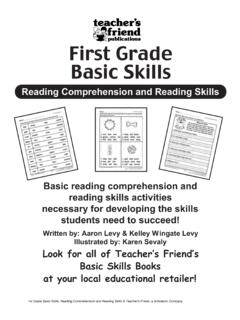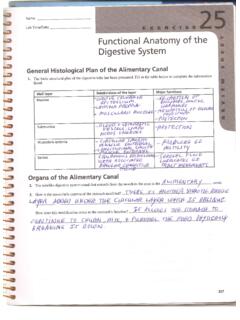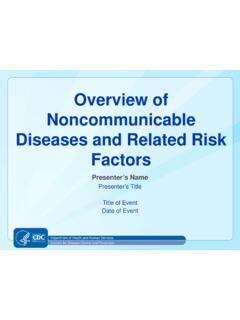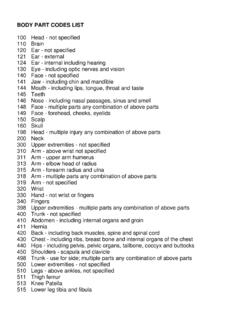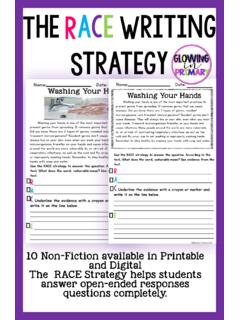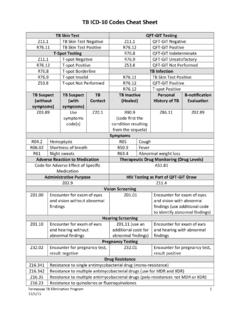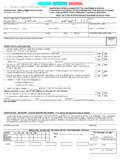Transcription of E a s y M a k e & Learn Projec
1 NEW YORK TORONTO LONDON AUCKLAND SYDNEYMEXICO CITY NEW DELHI HONG KONGEasyMake&LearnProjectsHuman BodyHuman BodyBYDONALDM .SILVER ANDPA TRICIAJ .WYNNE Easy Make & Learn Projects: Human Body Donald M. Silver & Patricia J. Wynne, Scholastic Teaching ResourcesScholastic Inc. grants teachers permission to photocopy the pattern pages from this book for classroom use. No other part of thispublication may be reproduced in whole or in part, or stored in a retrieval system, or transmitted in any form or by any means,electronic, mechanical, photocopying, recording, or otherwise, without written permission of the publisher. For informationregarding permission, write to Scholastic Inc., 555 Broadway, New York, NY cover and interior design by Kathy MassaroCover and interior artwork by Patricia J. WynneISBN: 0-439-04087-6 Copyright 1999 by Donald M. Silver and Patricia J.
2 WynneAll rights in the my grandfather,Dr. A. M. Wynne,the old country doctorPJWTo Wini Manoian,a teacherDSssssssssssssssssssssssssssssssc Easy Make & Learn Projects: Human Body Donald M. Silver & Patricia J. Wynne, Scholastic Teaching Hints for { Body Mysteries { { Eye (Sight)..25 Ear Accordion (Hearing)..28 Want a Taste? (Taste)..31 Take a Whiff (Smell)..34 Key to Touch (Touch)..37 THEINS ANDOUTS OFSKIN{ s in Skin?..41 See How They BUNCH OFBONES{ Are My Bones?..47 Grow a { { In, Breathe OFITALL{ a { , About the Human Make & Learn Projects: Human Body Donald M. Silver & Patricia J. Wynne, Scholastic Teaching ResourcesIntroduction4 Welcome to Easy Make & Learn Projects: Human Body!The human body is a great science topic to explorewith elementary students. Children are naturallycurious about their bodies and have lots of firsthand knowledgeand experience about how their own bodies function.}}}}}}}}}
3 They knowthey are growing, losing teeth, and changing, and they want toknow why! The models, manipulatives, accompanying backgroundinformation, and lessons in this book will help motivate and teachyour students about the human body. Students will Learn whatthese body parts look like, what they do, and where they arelocated. Many models contain text and labels that will increasestudents science vocabulary and improve their reading skills. Many of the concepts presented in this book meet a number ofNational Science Education Content Standards for Life Science(Grades K 4)The Characteristics of Organisms{Organisms, including humans, have basic needs, like air, water, and food.{All organisms have specific structures that serve different functions ingrowth, survival, and reproduction. Humans have specialized bodystructures for walking, thinking, seeing, and talking, for example.}}
4 {The behavior of individual organisms is influenced by internal cues, likehunger or pain, and by external cues, like sounds, smells, or changes intemperature. Humans, as well as other organisms, have senses that helpthem detect these Make & Learn Projects: Human Body Donald M. Silver & Patricia J. Wynne, Scholastic Teaching Resourcesthe National Science Education Standards, the criteria intended toguide the quality of science teaching and learning in this standards support a hands-on, inquiry-based approach tolearning. The chart on page 4 shows how the topics in this bookcorrelate with the Life Science Content Standards for students inkindergarten through grade s InsideThe models and manipulatives in this book allow you and yourstudents to investigate the human body s structures and models in each chapter focus on a particular system of thebody. The chapters are independent and can be used in any within each chapter are the following sections:Model Illustration This picture, labeled with the model s name, shows how thefinished model looks.}
5 It can be helpful to use as a reference whenmaking the BasicsBackground information on the chapter s topic and concepts iscontained here. Use some or all of this information with the TeachingWith the Model section, depending on the level of your the ModelThese are easy-to-follow instructions with diagrams for assemblingthe models. See the helpful hints for following the instructions onthe next With the ModelThis section provides a step-by-step lesson map with discussionquestions for using the models to teach the chapter s main More!In this section you ll find related activities to extend your students investigation of the Make & Learn Projects: Human Body Donald M. Silver & Patricia J. Wynne, Scholastic Teaching ResourcesHelpful Hints for Model-Making {The thickest black lines on the reproducible pages are CUT lines.{Dotted lines on the reproducible pages are FOLD lines.}}
6 {Some models have slits or windows to cutout. An easy way to make them is to foldthe paper at a right angle to the solid cutlines. Then snip along the lines from thecrease of the fold inward.{Often glue sticks can be substituted for tape. However, somesituations, for example, creating flaps, require tape. {If students will be coloring the models and using tape, havethem color first so they won t have to color over the tape. {Some models are more challenging to assemble than through each Making the Model section (or make themodel yourself ) beforehand to determine if it s appropriate foryour students to do on their own. You can choose to make amore challenging model yourself and use it as a classroomdemonstration tool. {If asingle model will be handled a great deal, consider creatingit from heavier paper. Simply paste the reproducible page ontoconstruction paper before beginning Make & Learn Projects: Human Body Donald M.}}}}}
7 Silver & Patricia J. Wynne, Scholastic Teaching Resources7 THEHUMANBODYS tudents make a book about the human body that introduces them to a number of systems and organs in the Body BookThe human body is a complex living organism that takes in foodand air to provide itself with nutrients and energy for movingand thinking. The body accomplishes these tasks thanks to livingorgans and tissues as well as nonliving parts, such as water, vitamins,and organis a group of tissues that perform a specific function. Forexample, the heart pumps blood. In turn, tissuesare groups of similarspecialized cells the smallest living parts in the body. The organs andtissues of the body are divided into organ systemsbased on thefunction they accomplish. Seven organ systems are featured in thisbook.{The integumentary systemis the skin, hair, and nails. It protectsthe body.{The skeletal system sbones, cartilage, and joints provide a movingframework for the body.}}
8 {The muscles of the muscular systemproduce movement andgenerate heat in the body.{The brain, spinal cord, and nerves make up the nervous system,which takes in information, allows communication within thebody, and controls body functions.{The circulatory systemis the heart and blood vessels that pumpand transport blood throughout the body.{The lungs and other breathing organs make up the respiratorysystem. They work to exchange oxygen for carbon dioxide in theblood.{The stomach, liver, intestines, gallbladder, and esophagus are allfood-processing organs of the digestive system. They work toEasy Make & Learn Projects: Human Body Donald M. Silver & Patricia J. Wynne, Scholastic Teaching Resources1 Photocopy pages 9 and 10 as double-sided copies or glue the pages back toback. The heads of the figure on bothsides should be at the top of the along the solid black line at thetop of the back and forth alongthe dotted lines so that page 1 ison top and page 5 is the books if is the human body made of?}}}}}
9 (living tissues, cells, organs, andnonliving chemicals, like water, vitamins, and minerals) Ask students what acell is (smallest living part of the body), what tissue is (groups of cells with aparticular task or specialization), and what an organ is (groups of tissues thatperform a specific function). Challenge students first to name an organ andthen identify the tissue and cells that it is made of. (For example, the brain ismade up of brain tissue, which is made up of nerve cells.)2 What are some things the human body can do? (eat, move, feel, see,think, remember, and so on.)3 Which systems of the human body are featured in THEBODYBOOK?(skeletal system and muscular system) Challenge students to name the humanbody system that each of the organs on page 5 belongs to. (brain nervoussystem; lungs respiratory system; liver, stomach, and intestines digestivesystem; heart circulatory system) Have students compare and contrast thefunctions and organs of these the Model{reproducible pages 9and 10{scissors{crayons, coloredpencils, or markers(optional)MaterialsMaterialsTHEHU MANBODYT eaching With the ModelEasy Make & Learn Projects: Human Body Donald M.}}}
10 Silver & Patricia J. Wynne, Scholastic Teaching ResourcesThe Body Book9 Muscles are under your are more than 600 musclesin your depend on your muscles forevery move you make!Bones are under your hold you up and giveyour body also protect important brain, heart, lungs, stomach,and other organs are underyour has its own job to Make & Learn Projects: Human Body Donald M. Silver & Patricia J. Wynne, Scholastic Teaching ResourcesThe Body BookThe Body Book10 Skin covers your bodyand protects your endings in your skin help you feelwarmth, cold, pressure, and you f indeach of these organson page 4?BrainLungsLiverStomachIntestinesHeart5 1 Easy Make & Learn Projects: Human Body Donald M. Silver & Patricia J. Wynne, Scholastic Teaching ResourcesITTAKESNERVES11 This mobile illustrates six kinds of body MobileCells are the smallest living (or organic) parts of the human all body cells are too tiny to be seen without a cells grow and use energy to stay alive.

